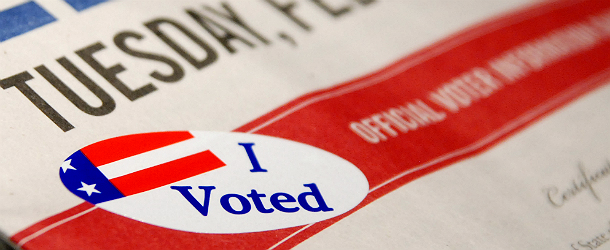
(Photo Credit: Denise Cross/Flickr)
In a piece for the Western Political Quarterly titled, “The Pattern of California Politics,” Professor Dean E. McHenry writes of four major themes in the history of Golden State’s elections 1) weakness of political parties, 2) significant influence of what he calls “pressure groups”, 3) extraordinary independence of California voters, and 4) “extreme and unique political movements.” McHenry published the piece in 1948.
My, how things have not changed.
In this second installment of a series of essays written in support of our “top two” primary system, I write as a former statewide Republican candidate who, despite its current unpopularity among my fellow partisans, sees the benefits of the system for Republicans. I acknowledge that if the current trend lines continue, it might not be too long before we declare that the GOP falls into the third place in voter registrations behind “No Party Preference” – a term less descriptive of a cohesive political movement than a latter-day confirmation of Dr. McHenry’s understanding of “#3” above.
Even as a lifelong partisan, the growth of NPP voters in the state does beg the question whether primaries are for the parties or the voters? They’re not sponsored by parties, but by the all California taxpayers with public tax financing everything from ballot information packets to the ballots themselves. Shouldn’t these millions of NPP voters have a say in who makes it to the general election? Speaking of those voters, it was Californians who passed non-partisan primaries through Prop 14 back in 2010. More recently and specifically, my own California Republican Party delegates voted by over 60 percent to support “Top Two” in our 2017 Fall Convention.
So, what happened? Well, in two parts, it appears that the parties (yes, including mine) forgot our history, and how to count. While the “Top Two” could be seen as weakening parties, they could also be viewed as strengthening them. We should remember that the party primary itself was a reform (in 1909) proposed by Progressive Republicans to bring the nomination process out of the smoke-filled rooms of the party caucus to allow registered party members across the state to decide on representatives in the general Election. At our best, California Republicans understand that increasing civic engagement opportunities is a good thing.
On the math side, while it is the case that registration numbers for my party have been decreasing, this is still the reality: if Republicans run one major candidate in a statewide race, that candidate will make it through to the general. With the “Top Two” in place, it appears that both state Republicans and Democrats (and the media) are putting a greater emphasis on party endorsement races in their respective conventions. It has become increasingly important for candidates to earn this party endorsement, and the individual and group endorsements along with it.
As a Republican (and a delegate) I was besieged (in a good way) by statewide candidates seeking both my formal endorsement and my delegate vote at the convention. As it turned out, current Republican gubernatorial front-runner, John Cox, missed the endorsement by only a few percentage points (of the necessary 60 percent) at the recent April convention, but he still used this majority vote in his advertising to fellow Republicans. And a number of statewide candidates for down ticket offices, did, indeed, earn party endorsements. Each stands a very good chance of making it through the primary and into the general in November.
Much of the attacks on “Top Two” from my side of the aisle arise out of our inability to vote a Republican into the General Election in the 2016 U.S. Senate race eventually won by Kamala Harris, and the current prospects for a Republican to make it into the general election in the governor’s race. Still, these races should be seen in context of the 2014 cycle, in which we qualified Republicans for ever statewide office…including me.
As a Republican running in the current primary system, I found it helpful to start my run for the general election before the primary. Knowing that I’d have get NPP and Democrat votes to win in the general, I could run a race in the primary to begin attracting those voters earlier on. I wasn’t ultimately successful, of course, but I did earn more votes than any other Republican in the state’s tightest statewide race. I must have earned some of those votes in November.
In those 2014 races, after a tough battle to become the leading GOP candidate for governor (ultimately won by Neel Kashkari), we had a single distinguishable candidate for every office. We will likely see the same thing this year – at least for the constitutional offices…except for one in which at least a former Republican might just win: Insurance Commissioner with Steve Poizner. Either by deal-making or chance Steve has had the primary candidate numbers game work in his favor – with no notable Republicans in the race and at least two Democrats and a Peace & Freedom Party candidate.
Now no longer a candidate, but a Republican voter living in deep blue Santa Monica, I join in solidarity with my fellow minority-voting party faithful in other Democrat strongholds to tell those in friendlier districts, that “Top Two” has made my primary and general election votes relevant in state legislative offices (Assembly and Senate) for the first time in over a decade of voting here.
The California GOP has been a great party in the past, and will be again. In supporting the “Top Two” I support my party’s commitment to increased civic participation, our best candidates, and all of our voters in a state always known for its “extraordinary independence.”
Pete Peterson is Dean of Pepperdine University's School of Public Policy and a member of California Forward's Leadership Council

